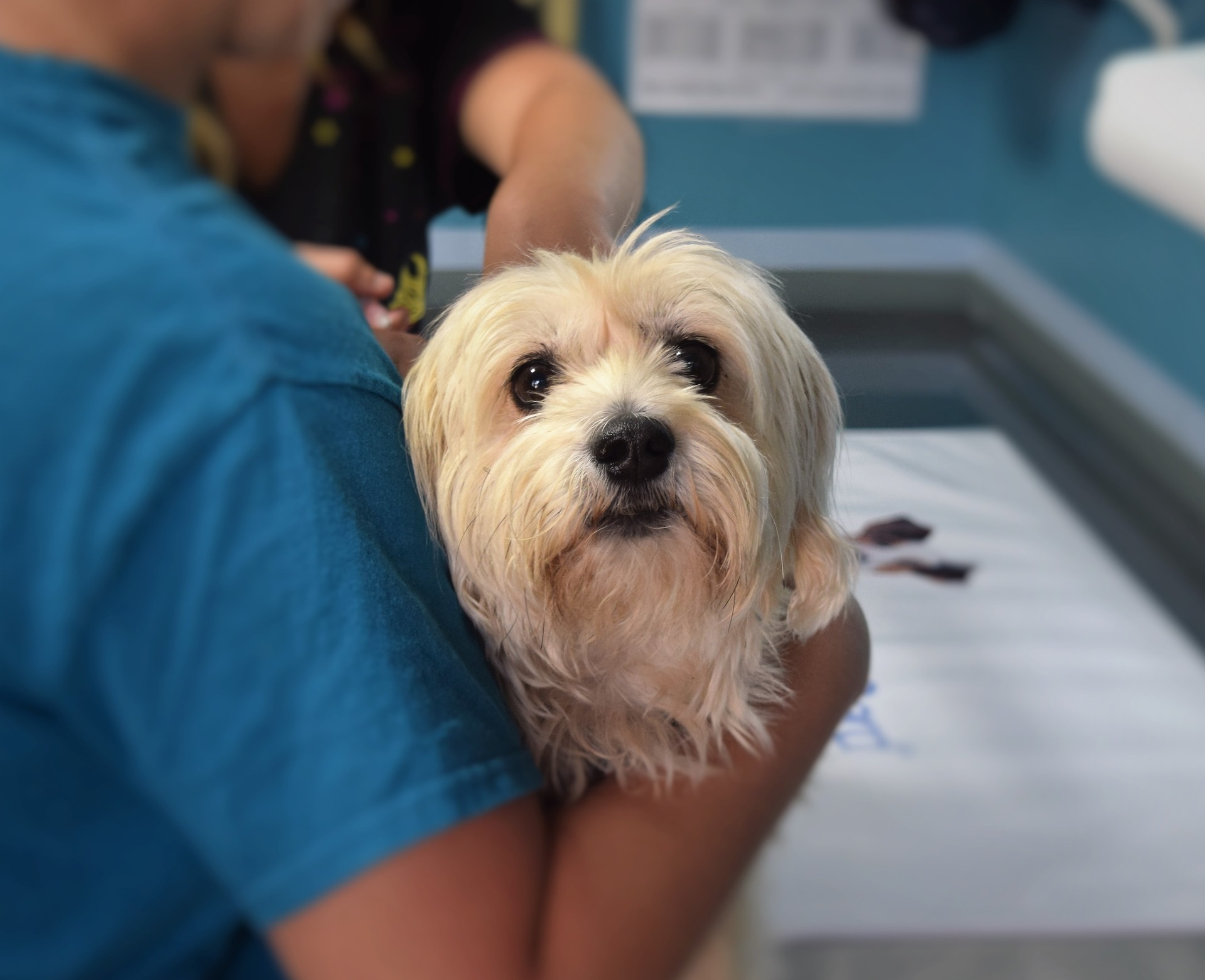Husbandry Training: Drama-Free Vet and Grooming Visits
I was at a Training session the other day and mentioned that “husbandry training” was something we could work on if the family wanted additional training. The male owner piped up and said, “what…so I can be a good husband?” We all got a good laugh out of that one!
Husba—what?
Husbandry is the umbrella term for grooming, medical, or health/wellness procedures. Husbandry training is about teaching the dog (or any other animal) to be a willing participant in those procedures. This approach is also called “cooperative care” because the animal is cooperating with us in his care.
Husbandry training usually involves working on the animal’s emotions and on his behavior: we want him to enjoy the procedures, and also know how to do things that make the procedure easier.
Nail trims are a great example. Imagine trimming your dog’s nails without needing another two or three people to hold him down. It’s possible with husbandry training! You can teach your dog to feel happy when the clippers come out (emotions) and to lie still while you trim (behavior). Prioritizing the dog’s emotions is a huge part of what makes this work.
Husbandry training is extremely popular (and dare I say, standard procedure) among animal keepers/trainers in zoos. Watch husbandry training for giraffes at Blank Park Zoo!
What’s the Point?
“Is this really necessary? Getting this stuff done is what vets and groomers do for a living.”
Yes, you could just let the “professionals” handle it, but it’s no fun for your dog.
I spent four and a half years as a professional. One of my primary jobs as a veterinary surgery technician was restraint. I’ve held a lot dogs down for sedation, vaccines, blood draws, and nail trims. I’ve felt them fighting while I lay on top of them and heard them panting like a freight train when we finish. Been there, done that. I have those skills, but I’d rather not use them.
Dogs who resist or fight husbandry procedures are stressed out and that’s not good for their bodies or their behavior.
Your 2 year old dog might be able to go through the ordeal, but what about when your dog is 9…10…11…12? Is his heart going to withstand that amount of stress?
Plan for a stress-free future and train some husbandry skills now.
Resources
Stella HATES having her feet handled, so we teach her to lie on her side without being held down. Head down on the bed means she’s comfortable and we can continue. Head up means she’s not comfortable.
Chin Rest is another useful husbandry skill for dogs. With the dog’s chin resting on a surface, his head is still so eye and ear exams or drops are much easier. Some folks also use it for restraint free vaccines! Smart girl Echo first learned to Chin Rest on my lap.
Positive Dog Husbandry is a great resource for how to teach some basic husbandry skills. They have both a website and a Facebook group!
Find a Fear Free Certified professional here. More veterinarians, veterinarian technicians, and even entire practices are learning how to make medical visits less stressful for their furry patients. This is great for all dogs, but particularly helpful if your dog has severe problems at the vet.
If you’re in the Round Rock area and need help teaching husbandry skills, let me know! I’d be happy to help.

